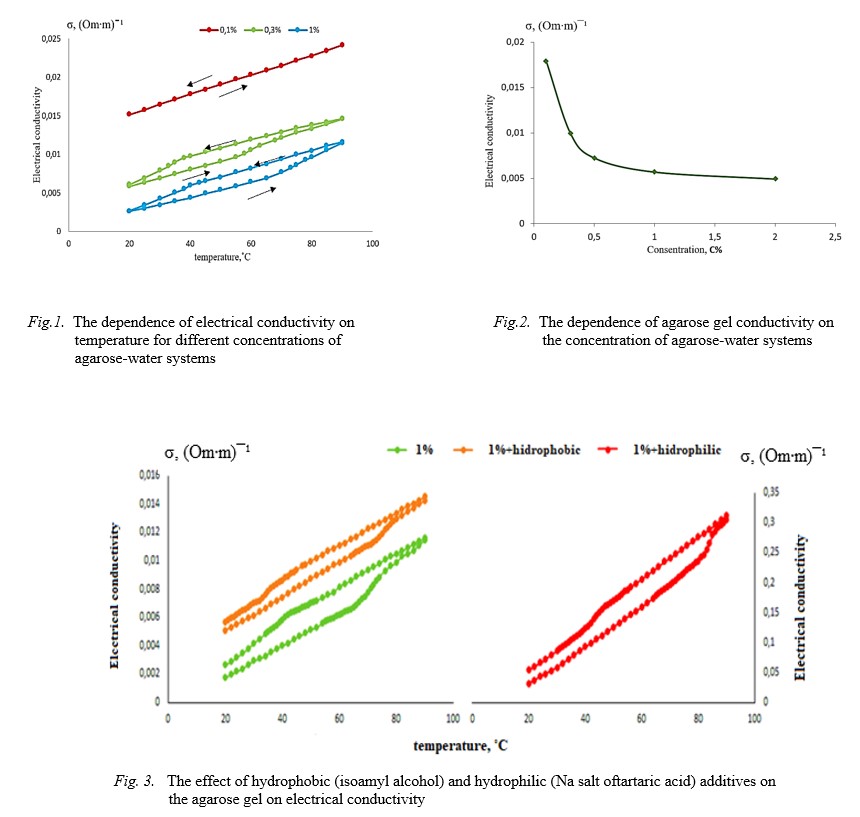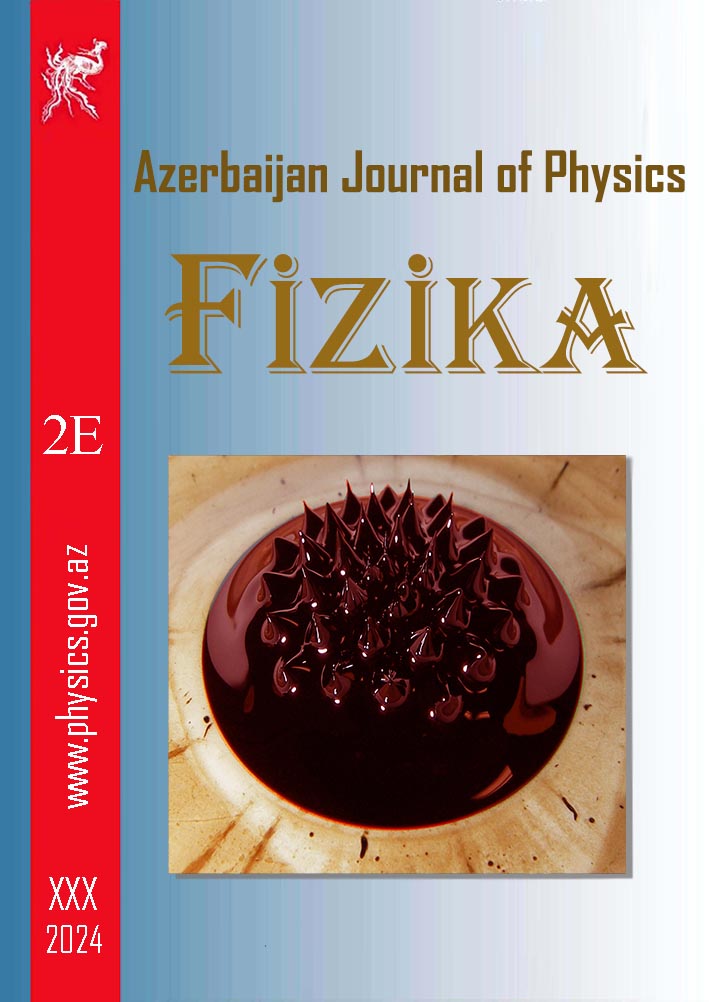ABSTRACT
In the present work the electrical conductivity method was used to study the sol-gel phase transition in the agarose-water system. The 0.1% agarose-water system is used for
this purpose; The temperature dependence of the conductivity of 0,1%, 0.3% and 1% solutions and as well as the influence of hydrophobic (isoamyl alcohol) and hydrophilic
(Na salt of tartaric acid) additives on this dependence were studied.It was shown that the hydrophilic additive makes the gel more stronger and shifts the gelation (Tg)
and melting (Te) temperatures up. The hydrophobic additive (hydrophobic isoamyl alcohol) on the contrary weakens the gel and shifts the gelation (Tg) and melting (Te)
temperatures downward.
Keywords: polymeric hydrogels, agarose, electrical conductivity, hydrophobic additive, hydrophilic additive.
PACS: 77.22.Ej, 64.75 Bc, 31.70. Dk, 61.70 Og
DOI:-
Received: 29.11.2023
AUTHORS & AFFILIATIONS
Baku State University, Azerbaijan
E-mail: aynurasadova19@gmail.com
Graphics and Images

Fig.1-2-3
|
REFERENCIES
[1] A.K. Mishra. Conducting Polymers: Concepts and Applications, Journal of Atomic, Molecular, Condensate & Nano Physics, 2018, v.5, № 2, 159-193.
[2] G. Kaur, R. Adhikari, P. Cass, M. Bown, P. Gunatillake. Electrically conductive polymers and composites for biomedical applications, RSC Adv., 2015, 5, 37553–37567.
[3] U.W. Gedde, M.S. Hedenqvist. Fundamental Polymer Science, Springer, 2018, 501 p
[4] V.K. Takur, M.K. Takur, S.I. Voicu. Polymer Gels: Perspectives and Applications, Springer, 2018, 419 p.
[5] R. Singh, P.K. Singh, V. Singh, B. Bhattacharya. Agarose biopolymer electrolytes: ion conduction mechanism and dielectric studies, Cellulose Chem. Technol., 2017, v. 51, (9-10), 949-955(2017).
[6] R. Pomfret, K. Sillay, G. Miranpuri. Investigation of the electrical properties of agarose gel: characterization of concentration using Nyquist plot phase angle and the implications of a more comprehensive in vitro model of the brain, Annals of Neurosciences, v.20, № 3, 2013, 99-107.
[7] M. Chelu, M.A. Musuc. Polymer Gels: Classification and Recent Developments in Biomedical Applications, Gels, 2023, v.9, 161-187.
[8] A. Ullah, M.H. Othman, F. Javed, Z. Ahmad, H. Akil. Classification, processing and application of hydrogels: A review, Materials Science and Engineering, C 57 (2015) 414–433.
[9] A. Taghizadeh, M. Taghizadeh, P. Zarrintaj, J.D. Ramsey, S. Habibzadeh, F. Seidi, M.R. Saeb, M. Mozafari, M.A. Salati, J. Khazai, A.M. Tahmuri, A. Samadi, Agarose-Based Biomaterials: Opportunities and Challenges in Cartilage Tissue Engineering, Polymers 2020, 12, 1150-1165.
[10] E.A. Masimov, A.R. Imamaliyev and A.H. Asadova, Spectrophotometric investigation of gel formationin water solution of agar, Modern Physics Letters B, 2050147 (7 pages).
[11] M. Tako, S. Nakamura. Gelation mechanism of agarose, Carbohydrate Research, 1988, 180 (2), 277-284.
|
